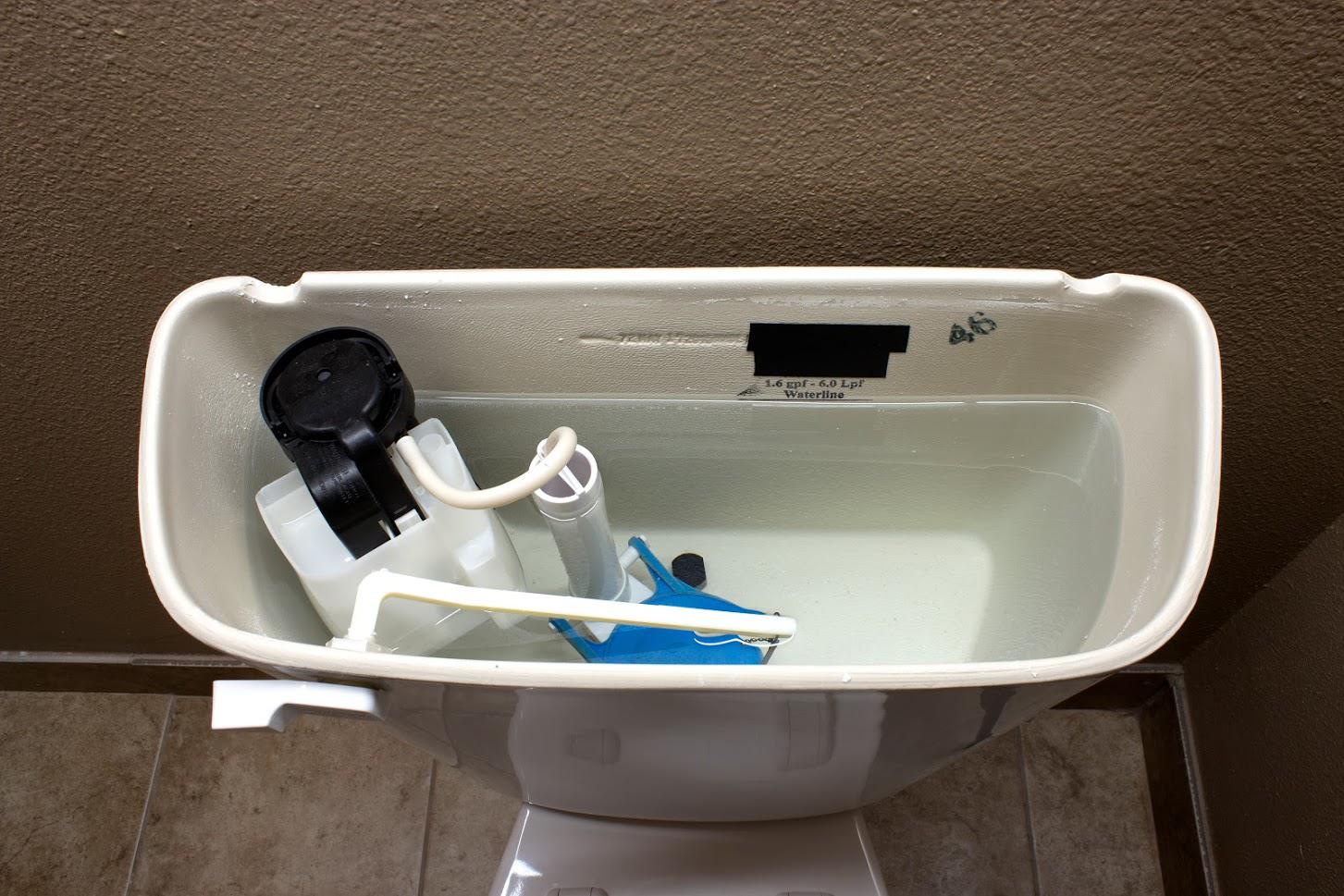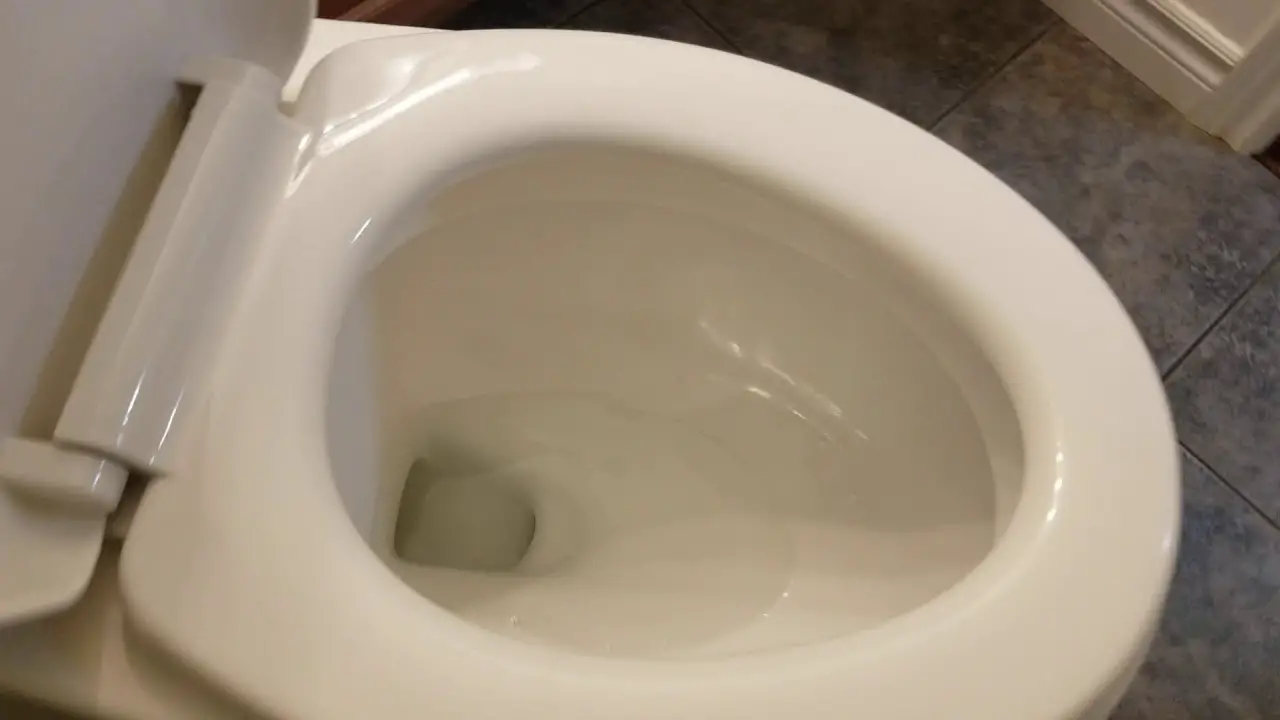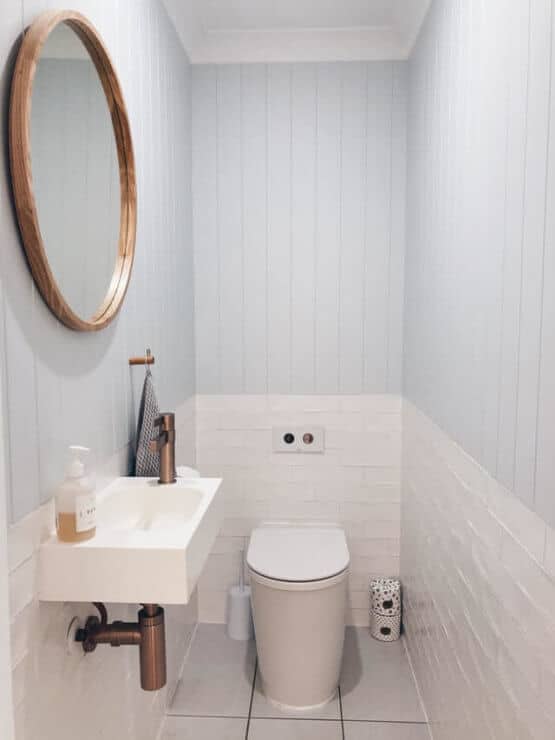What you can do if your toilet bowl is empty but tank is full?
Each of us has a toilet that we use every day. However, we occasionally encounter these peculiar circumstances where we discover our toilet bowl to be dry and wonder where the water went.
Your toilet bowl might intermittently empty itself in particular circumstances. In such a scenario, it becomes difficult to investigate why the toilet bowl empties frequently and yet operates fine for weeks or sometimes months.
Most likely, you have noticed that your toilet bowl abruptly empties, and this frustrates you. Toilet bowls randomly and suddenly emptying is a common problem that many people have to deal with daily. They go to bed with the toilet bowl looking normal and full, and when they wake up, it is empty. This means that they have to refill it to use the toilet.
Why Your Toilet Bowl Is Empty But Tank Is Full

Here are some possible causes for the sudden emptying of the toilet bowl:
- A broken toilet bowl
The toilet bowl can develop a hairline crack at the bottom. The toilet bowl is designed to allow water to flow under it. When a crack occurs, the water drips into the trap, causing the toilet to overflow [1].
Such cracks are typically difficult to spot. When it occurs, there is typically no sign of an internal fissure in the bowl because water does not flow onto the floor.
If the tank or the bowl has a hairline crack, you might be able to caulk the leak using watertight epoxy. Epoxy can be useful for fixing cracks near the base of the toilet, such as those surrounding the bolts holding it to the floor [2].
Epoxy may be used to patch up cracks below the water line, but keep in mind that it frequently fails to do so. Replacement is the only choice in that situation.
- Venting Issues
Sewer vent pipes permit fresh air in while allowing sewer gases to exit the waste pipes. However, if your home’s plumbing vent pipe is obstructed, the pipes will attempt to access air through other openings and may suction water from the toilet bowl as a result.
In a typical situation, water drains down the drain pipe that attaches to the toilet bowl. However, blockage in the venting pipe will prevent air from entering the pipe.
As a result, water will be pulled out of the toilet trap and down the drain pipe by the strong suction present in the sewage system [3].
Your bathroom’s toilet serves as the system’s vent. As water and air pass through your toilet bowl, you will hear a loud gurgling sound, which indicates this.
The blockage most frequently happens on the roof of your home, where the vent pipe is usually found. The vent pipe can be blocked by anything, from bird nests to dead birds, to foliage on a windy day.
Additional indications of a blocked vent include:
- Sounds emanating from the bathtub or other sinks when the toilet flushes
- A rotten egg-like odor in the kitchen, bathroom, or close to drains
- Gurgling drains and toilets
- Slow-moving drains
Climbing onto the roof and clearing the pipe of any obstruction is required to unclog a blocked plumbing vent. To remove obstructions, you should use a plumber’s snake.
Afterward, you should use a garden hose to thoroughly clean it. It’s also wise to spend money on a vent cover.
Place your palm over the top of the vent and ask a helper to flush the toilet to see if the vent has been cleared. There most likely still is a blockage if you don’t feel suction.
- Blocked Inlet Holes
Clogged inlet holes are another cause of unusually low water levels in your toilet bowl. These inlet holes are located just below the rim of your toilet and are often known as rim jets. Hard water mineral deposits may accumulate and block the holes in your toilet.
To unclog the inlet holes, start by gently pouring heated vinegar into the tank via the overflow tube. Allowing it to stay in the tank for a few hours will help the mineral deposits in hard water dissolve [4].
Scrub away any remaining sediments from the tank with a hard-bristled brush.
To remove any debris from the rim jet holes, carefully poke a short, stiff wire inside of them and move it up and down. Once you’re finished, flush the toilet to see if that resolves the issue.
- A Faulty flapper
Flappers allow the water in your toilet bowl to be retained. They allow water to flow from the tank to the toilet bowl while the toilet is flashing. If the flappers are damaged the water in the tank cannot flow down the toilet bowl during this process [5].
The tank will constantly be filled as a result, but there won’t be any water in your toilet bowl.
- A blockage in the vents and drain line
Your toilet’s plumbing might be partially clogged, which causes it to siphon water out of the bowl and cause low water levels. By paying attention to how the toilet flushes, you can determine whether you have a partial obstruction or not.
There is back-siphoning in your toilet’s trap if the water level in the bowl rises before gradually declining until the bowl is dry. The curved pipe behind the toilet bowl connecting the drainpipe to the opening at the base is called the toilet trap. The trap ascends, and its function is based on the shape it takes.
It’s by design that the last bit of water flushed down the drain remains in the trap. This leftover water is crucial because it blocks the drain pipe to stop foul-smelling waste gases from entering your home again [5].
The toilet bowl will run dry if there is a partial clog in the trap, which prevents it from collecting water. You might try using a plunger to clear the obstruction at the trap.
But if the problem persists, you’ll need to call a plumber. They will employ a closet auger, which is a more powerful tool for clearing blockages from toilet traps.
- A broken pipe connecting the toilet bowl and tank
It is not necessarily the bowl and the drainage line that are to blame for the dry toilet bowl. A clog in the input hole or the connection between the tank and the toilet bowl may occasionally be the culprit. This causes the flushing water to flow more slowly, which may result in the toilet bowl being empty.
- The toilet tank has insufficient water in it
Low fill levels in the toilet tank might cause the toilet bowl to drain slowly when flushed. Calling a plumber or maintenance is the best course of action to help solve the issue because there are several reasons for this, most of which are out of our control.
- The fill valve could be damaged
The fill valve controls water flow into the toilet tank. If it is damaged, there may not be enough water in the tank when you flush. The fill valve has to be replaced to solve the problem. Fortunately, the replacement is relatively difficult, and chances are that you can do it without any issues.
- The refill tube is broken
Your toilet’s overflow tube, a vertical, wider plastic tube, is connected to the tank by the refill tube. It’s in charge of transferring water from the toilet tank to the bowl [6].
When damaged, it blocks the passage of water into your toilet tank and toilet bowl, leaving your toilet bowl empty. The fill tube needs to be changed to fix this. Luckily, you can easily do it yourself since replacement parts are readily available at the hardware shop.
How to determine if the toilet bowl is dry

It’s crucial to check the integrity of your bathroom’s water supply and the seal on the pipe leading to the toilet bowl before attempting to determine why it’s dry. This will allow you to determine the root cause of your problem.
Consider also checking whether anything has unintentionally opened the shut-off valve. However, if the shut-off valve is open and the water supply is flowing normally, follow these instructions:
- Examine the tank’s water level: Your toilet bowl will quickly dry out if the tank is empty and the difficulties we have covered above are present. Lift the tank’s lid slowly to see if there is enough water within. The tank can also be gently tapped to see if it is full. There should be enough water inside for it to not make a hollow sound.
- Flush your bathroom drains with water: Let the water flow into the drain while you have the bathroom faucets fully open. You can use this to determine whether the drain is plugged or not.
- Consider gurgling: Pay close attention to the sound the water makes as it runs through the drain in your bathroom. If it is gurgling loudly, your plumbing vent pipe most likely has a problem.
- Check the water level in the bowl: Bathroom gloves are required for this troubleshooting step. After cleaning and flushing, let the toilet bowl sit for 15 minutes. Leave the toilet alone for approximately an hour and a half, noting the water level on the porcelain. With a waterproof marker, draw a line above the current water level. After 1.5 hours, check it again. If the taps are closed and the water level drops, the tank is leaking.
Related: Toilet Flushes But The Poop Stays
Conclusion
You must maintain the correct water level in your bowl. This aids in limiting the entry of sewer gases into your bathroom. Your toilet will become filthy and unhealthy because septic gas is poisonous.
So attempt to fix it as soon as you discover any sign of trouble. If you are unable to pinpoint the problem, contact a plumber to get help.
Read Also: How To Fix Weak Flushing Toilet

Michael Davis is a heating & plumbing expert who currently works as independent contractor in SC. He also writes for Plumbertip.
For almost 10 years he worked on various plumbing tasks across South Carolina.


